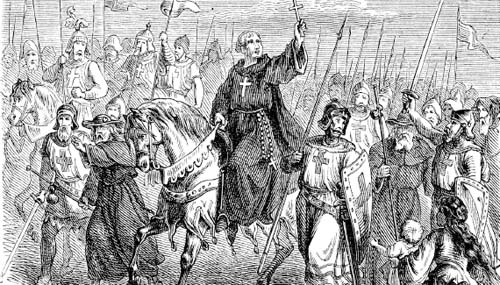ChristianityHistory and Sources |
Who are the Fathers of the Church and why are they important? |
Some of Christianity’s most important religious and theological literature dates from the fourth to the eighth centuries C.E. During the Patristic Age, or “Late Antiquity,” dozens of influential authors from North Africa, through the central Middle East and Anatolia (now called Turkey), to Rome and westward even to Spain, wrote major works in Latin, Greek, and Syriac. Patristic literature includes virtually every type, from extensive biblical commentaries to sermons to theological treatises.
Among the most important Latin Fathers is Augustine (354-430), Bishop of Hippo in North Africa and author of the monumental City of God and one of the best-known spiritual autobiographies, The Confessions. Tradition credits Augustine with a monastic rule that has influenced religious orders such as the Dominicans and Servites, as well as Ursu-line and Visitation nuns. Major Greek Fathers include the three Cappadocians, so called because they lived and worked in the province of Cappadocia in Asia Minor (now in east-central Turkey). More famous were Basil (c. 330-379) and his brother Gregory of Nyssa (c. 330-395). Gregory of Nazianzus (329-389), like the other Gregory, was an outspoken bishop much involved in the theological controversies of the day. All three made critical contributions to the clarification of Christian doctrines about Christ and the Trinity. Less famous but very important in the early Christian history in the eastern Mediterranean are the Syriac Fathers. They wrote in a Semitic language related to the Aramaic commonly spoken in the time of Jesus. Ephrem of Syria (306-73) authored dozens of works, almost all in verse and including many hymns that are still sung in worship rituals.

An 1880 engraving depicting Saint Bernard of Clairvaux, a French abbot and reformer of the Cistercian order, leading the Second Crusade, a responsibility laid upon him by Pope Eugenius III.
